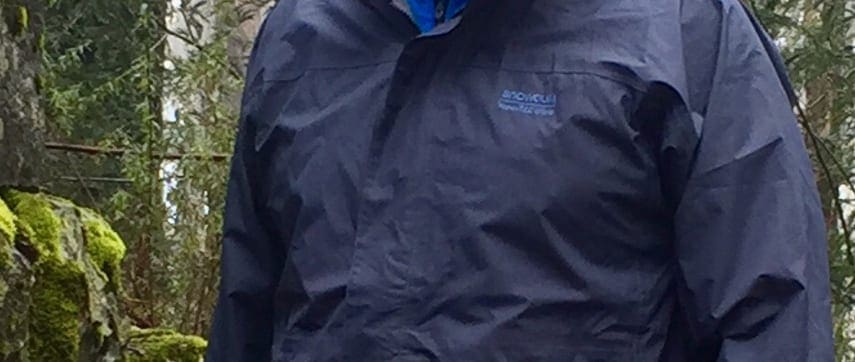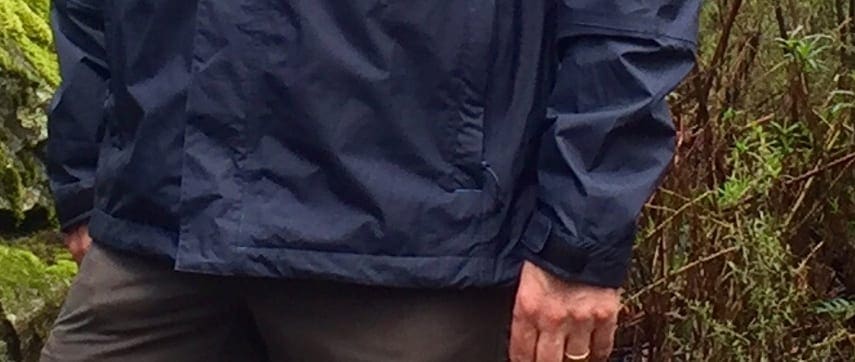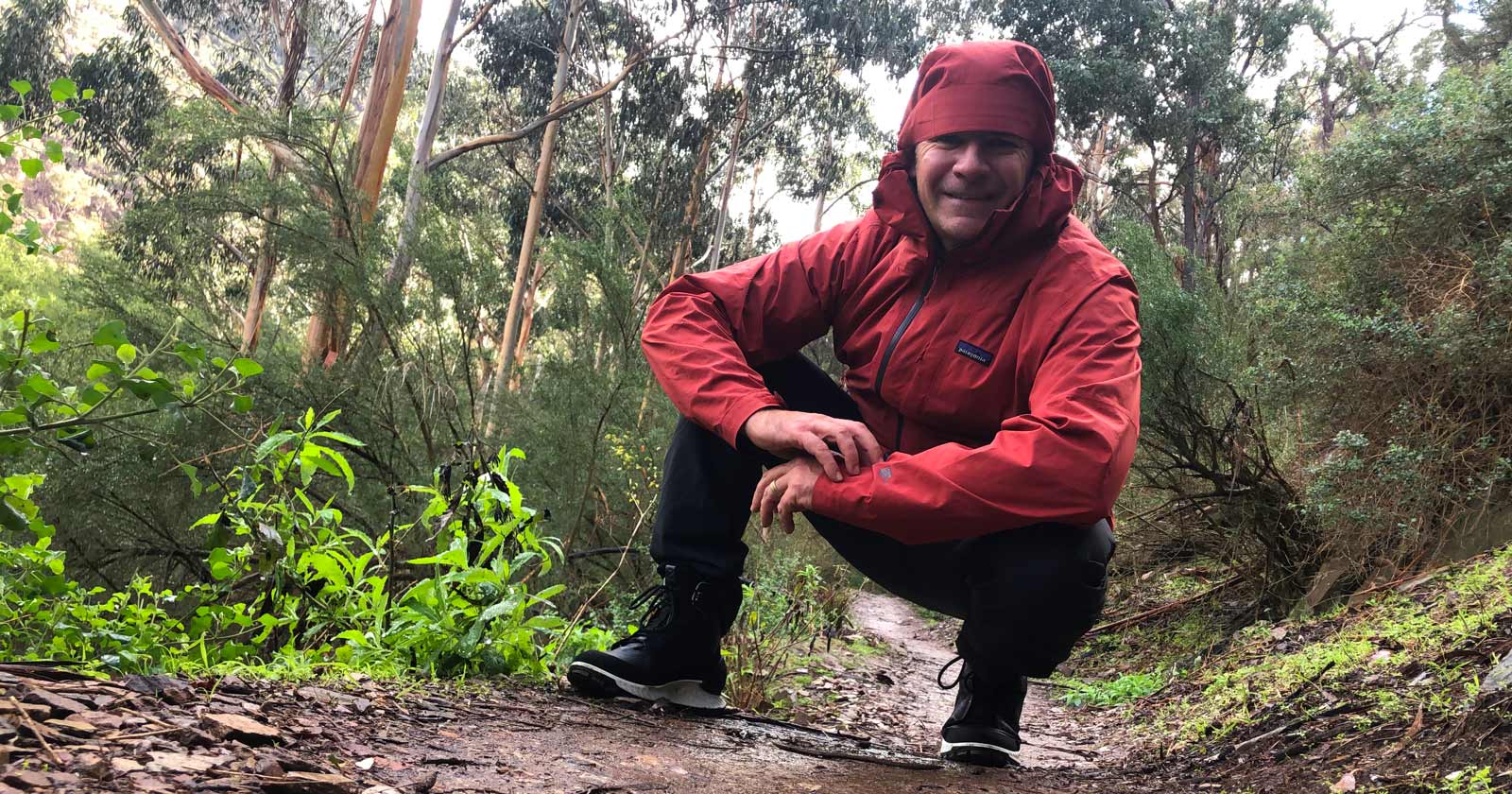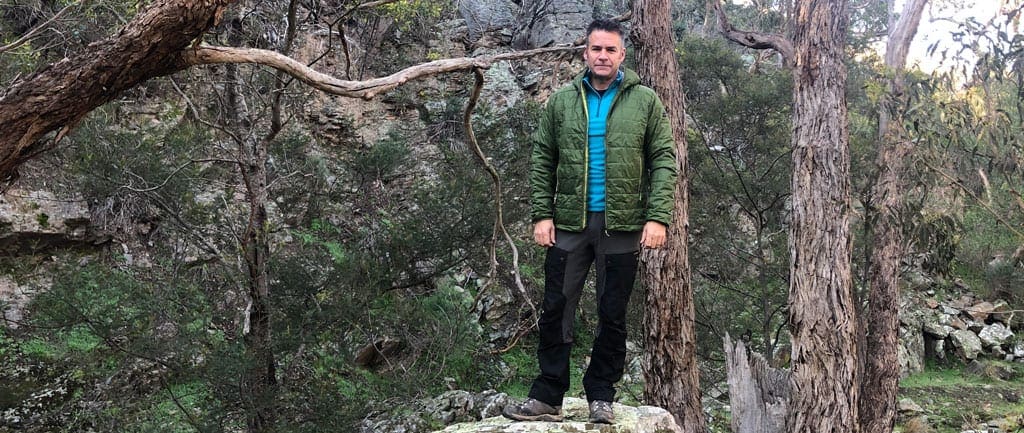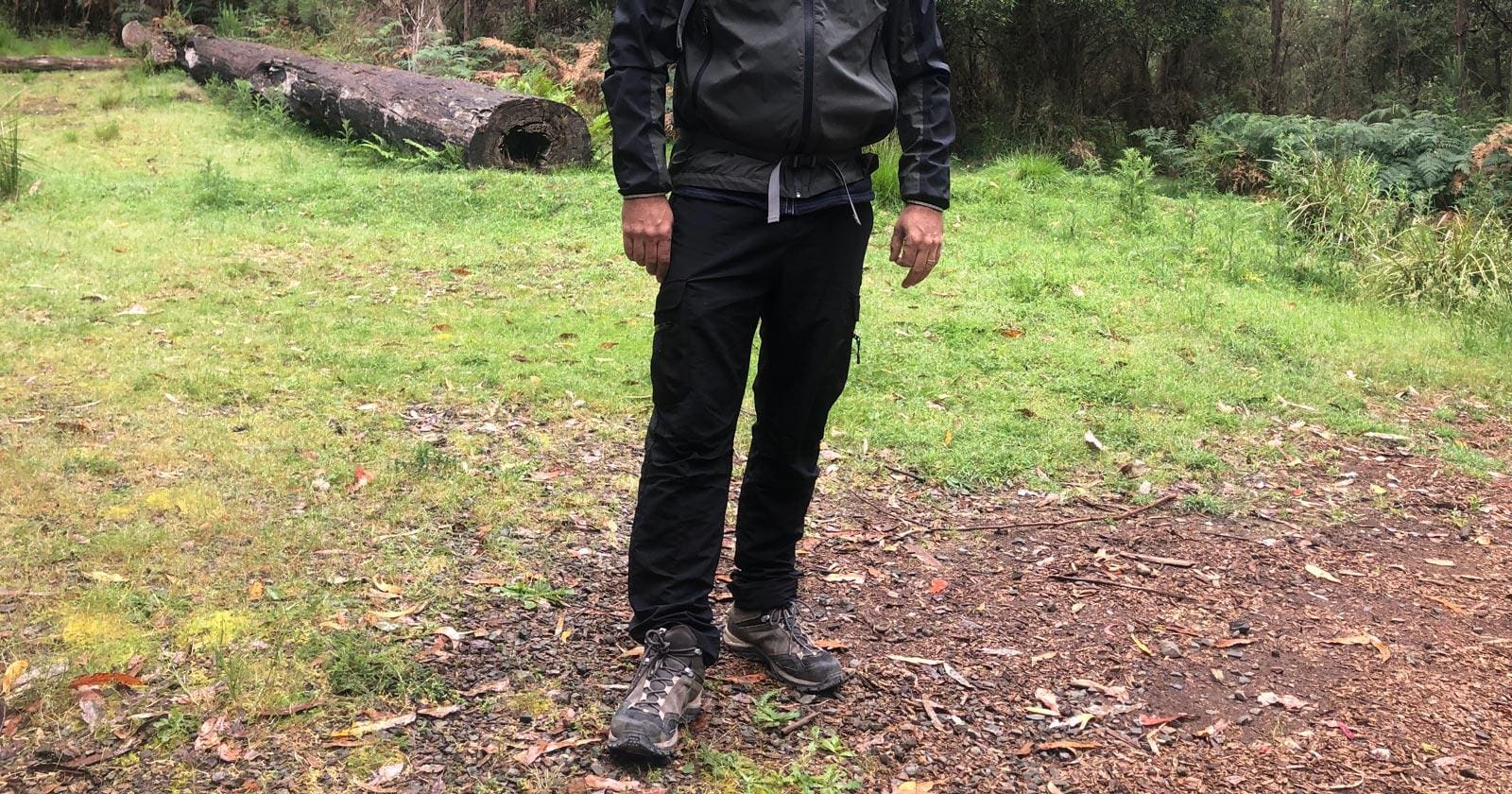Field test and review
(Valdez for men and Vienna for women)
You might be expecting perfect weather, gentle showers or full-on storms. Regardless of the forecast (particularly in Victoria) it is my opinion you should always take a waterproof jacket wherever you are hiking – just in case. Waterproof jackets (or hard shells as they are also known) are the final protective layer in your layering system. This layer provides a waterproof barrier. The main difference between these waterproof layers is the fabric they are made from and the level of breathability that this will give you.
The level of breathability you need is dependent on your chosen activity:
- High aerobic activities (such as mountain climbing, hill walking etc) necessitate the use of highly breathable fabrics.
- Less arduous activities (such as day to day use, or lowland walking) require a less breathable garment.
Over the years I have carried every kind of jacket in my pack in case of inclement weather. From the old style hard shell plastic waterproof rain jackets (that make you sweat profusely every time you move) to water resistant insulated shells, hybrid shells, soft shells and now back to the more modern waterproof hard shell which are now able to provide surprisingly increased breathability to their predecessor.
I should point out that nothing is able to be completely waterproof and also breathable. To be completely waterproof the garment needs to be a plastic bag and you can’t wear one of those without sweat condensing on the inside of the garment.
So membranes and coatings have been developed which keep water out but allow water vapour (sweat steam) to pass through. The trick to it is the balance between water resistance and breathability because basically the more you have of one the less you get of the other.
The differences explained
We call a jacket ‘waterproof’ when its water resistance is sufficient to keep out driving rain. Though companies disagree on test standards, you can trust that any gear that a major brand designates as ‘waterproof’ can stand up to a serious squall. You can read more about this under ‘tech specs’ below.
Waterproof/breathable: This type of performance rainwear keeps rain from getting through to your skin, while also moving sweat back through to the outside world. If you’re planning any activity that gets limbs and lungs pumping, this is your kind of gear because both precipitation and perspiration can soak you.
Water-resistant: Also breathable, this is gear that can handle light rain for a brief time—windbreakers and featherweight jackets, for example. If precipitation lingers or starts coming down sideways, these won’t be up to the task.
Waterproof/nonbreathable: Think rain slicker or emergency poncho. If you simply need to keep the rain out while sitting or standing around, this gear does just fine—and costs very little money. If you do any exertion, though, your rain slicker will be slick inside, too. And it won’t take much wind to make a poncho largely ineffective.
The main reason I have had a go at everything was based on price as who can afford to fork out $800+ on a waterproof/breathable jacket when they first start hiking? You need to know you are serious about it until going to that level.
Up until this year my jacket of choice was a waterproof softshell. For the most part on light to reasonably heavy rain I managed to keep nice and dry and remain warm. My optimism came to a brisk halt though following a really downpour that seemed to last the entire day. In fact, I think it did. I returned to my car looking like a drowned rat and feeling about 20 degrees cooler than I should have. (I know that’s not medically possible or I would be dead).
So the search began for a reasonably affordable, lightweight, waterproof, windproof and packable jacket. Yep, that’s a big ask but with today’s fabric technology there had to be something available. Right?
As chance would have it I was talking to Ross from Snowgum one day when he told me about their VaporTEC® Jackets. He was really excited about the fabric and for a non-fabric enthusiast he even had me excited by the end of the conversation. OK, so what is it? Apparently only The Lightest 3 Layer Waterproof Breathable Jacket on the Market!!! According to Ross this jacket is equally at home in the snowy Swiss Alps, humid Northern Thailand or using as an everyday jacket at home. I was sent a jacket to field test.
The SNOWGUM Valdez VaporTEC® Ultra 3-layer Jacket is a lightweight waterproof rain jacket made utilising a 3 Layer Membrane. It has a Waterhead Rating of 9000mm and Breathability Rating of 7500g per m2 per 24 hours.
Weighing just 400g in a size large, the Jacket in fully featured with all of the bells and whistles you’d find on much more expensive jackets. I’ve been wearing mine for four months in a wide range of temperatures and there’s precious little that this jacket can’t do.
It is 100% seam sealed, has an adjustable, packable hood with side cord-locks so you can cinch down the opening, along with an extended brim to keep rain off your glasses and forehead. The front zipper has a fold-over rain flap to keep water off the zipper and can be zipped up over your chin to keep water off your face in blowing rain.
There are two pockets on the inside of the jacket, handy for carrying a hat or gloves and electronic devices (complete with headphone access) and comes with its own stuff sack so that you can stuff the jacket into it when not in use. In addition, there are two large hand warmer pockets on the outside that can be used while wearing a backpack hip belt, along with a draw cord in the hem and velcro cuffs on the arms to keep the rain out.
I’ve worn this jacket in everything from freezing rain to heavy thunderstorms and it will keep you warm even if you’re hiking in the pouring rain. When water hits the surface of the jacket, it beads up and rolls off as you’d expect, rather than soaking the fabric and chilling you. The fact that the VaporTEC® Jacket has its own 3-layer membrane, means that you never have to worry about a DWR coating wearing off or having this jacket wet-out, the most common point of failure for rain jackets made using waterproof-breathable fabrics.
This jacket’s breathability ensures that it doesn’t retain a lot of heat when you’re active or allow it to escape in cold weather. I start to sweat when the temperature is about 20 degrees or higher, with or without rain. There is nothing more uncomfortable than becoming wetter inside your clothing due to heat than what is pouring down external to your clothing.
If you’re like me and tired of waterproof-breathable rain jackets that don’t live up to expectations, I suggest you give the SNOWGUM VaporTEC® Jacket a try. This jacket has found a home on my hiking gear list and it might just restore your faith in more affordable waterproof rain gear.
Waterproofing and breathability
There are two main internationally recognised test standards, the American ASTM standard and the Japanese JIS standard. As far as breathability is concerned, the ASTM standard is far more conservative… an ASTM breathability rating of 5,000 is more than 10,000 via the JIS test method. Check out Wikipedia ‘breathability’ for the full low-down. Snowgum uses the ASTM method and always has.
Waterproof jackets will be 2 layer (the outer fabric plus a coating or membrane), 2 ½ layer (the outer fabric plus a coating or membrane plus a printing on top of the coating or membrane to provide some protection to that layer and also to reduce the stickiness of it, 2 layer lined with a drop lining or 3 layer which consists of the outer fabric, the coating or membrane, plus a third layer of tricot or mesh to protect the waterproof layer.
I’ve mentioned ‘coating’ and ‘membrane’ here as the waterproof component. A coating is applied in liquid form to the inside surface of the outer layer fabric. A coating is not as consistent, not as durable and not as effective in performance as a membrane, but it is cheaper. A membrane is a separate waterproof/breathable film that is completely uniform and is bonded to the inside of the outer layer fabric. A membrane is much more durable than a coating.
A third layer on the inside of the fabric provides protection to the membrane or coating and also aids breathability because it creates a space between the waterproof layer and your skin to allow sweat to vaporise, it also creates a greater surface area depending on what is used as the inside layer.
In the past the problem with 3 layer has been that it increases the weight of the jacket substantially and creates stiffness and discomfort. Snowgum have overcome these negatives in their new Vaportec Ultra range – they are as lightweight, soft and comfortable as most 2 layer garments. And all Vaportec garments incorporate membranes, not coatings.
In terms of outer shell there are basically two materials used – polyester and nylon. Polyester is less durable, less tear resistant but softer. Polyester is generally used for travel and streetwear garments. Nylon is more durable, has a much higher tear resistance but is not as soft as polyester and is usually noisier (crinkly). For this lightweight Snowgum garment they have used a 20 denier very fine nylon which is very durable but very lightweight. In polyester this garment would not have a very high tear strength.
Buy direct from Snowgum for $299.95 (club price $199.95)
Tech Specs
- Material: 100% Nylon Outer
- VaporTEC® Ultra 3 Layer Membrane
- Waterhead Rating: 9,000mm
- Breathability Rating: 7,500g per m2 per 24 hours
- Fit: Regular
- Weight: 400g
